
The Armenian genocide was the systematic destruction of the Armenian people and identity in the Ottoman Empire during World War I. Spearheaded by the ruling Committee of Union and Progress (CUP), it was implemented primarily through the mass murder of around one million Armenians during death marches to the Syrian Desert and the forced Islamization of others, primarily women and children.

The Young Turks was a constitutionalist broad opposition movement in the late Ottoman Empire against Sultan Abdul Hamid II's absolutist regime. The most powerful organization of the movement, and the most conflated, was the Committee of Union and Progress (CUP), though its goals, strategies, and membership continuously morphed throughout Abdul Hamid's reign. By the 1890s, the Young Turks were mainly a loose and contentious network of exiled intelligentsia that made a living by selling their newspapers to secret subscribers.
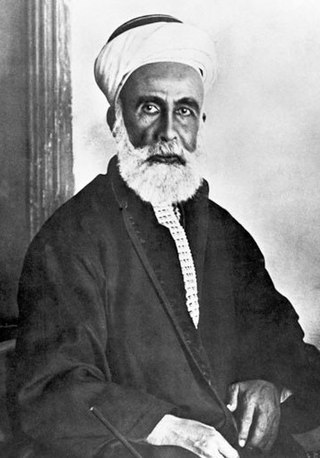
Hussein bin Ali al-Hashimi was an Arab leader from the Banu Qatadah branch of the Banu Hashim clan who was the Sharif and Emir of Mecca from 1908 and, after proclaiming the Great Arab Revolt against the Ottoman Empire, King of the Hejaz, even if he refused this title, from 1916 to 1924. He proclaimed himself Caliph after the abolition of the Ottoman Caliphate in 1924 and stayed in power until 1925 when Hejaz was invaded by the Saudis. His Caliphate was opposed by the British and French Empires, the Zionists and the Wahhabis alike. However, he received support from a large part of the Muslim population of that time and from Mehmed VI. He is usually considered as the father of modern pan-Arabism.

The Sayfo, also known as the Seyfo or the Assyrian genocide, was the mass murder and deportation of Assyrian/Syriac Christians in southeastern Anatolia and Persia's Azerbaijan province by Ottoman forces and some Kurdish tribes during World War I.

The Hamidian massacres also called the Armenian massacres, were massacres of Armenians in the Ottoman Empire in the mid-1890s. Estimated casualties ranged from 100,000 to 300,000, resulting in 50,000 orphaned children. The massacres are named after Sultan Abdul Hamid II, who, in his efforts to maintain the imperial domain of the declining Ottoman Empire, reasserted pan-Islamism as a state ideology. Although the massacres were aimed mainly at the Armenians, in some cases they turned into indiscriminate anti-Christian pogroms, including the Diyarbekir massacres, where, at least according to one contemporary source, up to 25,000 Assyrians were also killed.
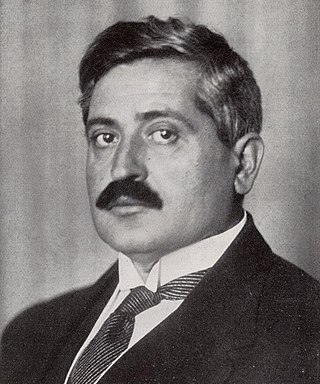
Mehmed Talaat, commonly known as Talaat Pasha or Talat Pasha, was an Ottoman Young Turk activist, politician, and convicted war criminal who served as the de facto leader of the Ottoman Empire from 1913 to 1918. He was chairman of the Union and Progress Party, which operated a one-party dictatorship in the Empire; during World War I he became Grand Vizier. He has been called the architect of the Armenian genocide, and was responsible for other ethnic cleansings during his time as Minister of Interior Affairs.

Western Armenia is a term to refer to the western parts of the Armenian highlands located within Turkey that comprise the historical homeland of the Armenians. Western Armenia, also referred to as Byzantine Armenia, emerged following the division of Greater Armenia between the Byzantine Empire and Sassanid Persia in AD 387. Since the Armenian genocide, the Armenian diaspora as well as Armenians indigenous to modern Turkey have sought political representation in Western Armenia or reunification with the Republic of Armenia.

Halil Kut, also known as Halil Pasha, was an Ottoman military commander and politician. He served in the Ottoman Army during World War I, notably taking part in the military campaigns against Russia in the Caucasus and the British in Mesopotamia.

The Greek genocide, which included the Pontic genocide, was the systematic killing of the Christian Ottoman Greek population of Anatolia, which was carried out mainly during World War I and its aftermath (1914–1922) – including the Turkish War of Independence (1919–1923) – on the basis of their religion and ethnicity. It was perpetrated by the government of the Ottoman Empire led by the Three Pashas and by the Government of the Grand National Assembly led by Mustafa Kemal Atatürk, against the indigenous Greek population of the Empire. The genocide included massacres, forced deportations involving death marches through the Syrian Desert, expulsions, summary executions, and the destruction of Eastern Orthodox cultural, historical, and religious monuments. Several hundred thousand Ottoman Greeks died during this period. Most of the refugees and survivors fled to Greece. Some, especially those in Eastern provinces, took refuge in the neighbouring Russian Empire.

The Circassian genocide, or Tsitsekun, was the Russian Empire's systematic mass murder, ethnic cleansing, and expulsion of 95–97% of the Circassian population, resulting in 1 to 1.5 million deaths during the final stages of the Russo-Circassian War. The peoples planned for extermination were mainly the Muslim Circassians, but other Muslim peoples of the Caucasus were also affected. Killing methods used by Russian forces during the genocide included impaling and tearing the bellies of pregnant women as means of intimidation of the Circassian population. Russian generals such as the ethnically Baltic German Grigory Zass described the Circassians as "subhuman filth", and glorified the mass murder of Circassian civilians, justified their use in scientific experiments, and allowed their soldiers to rape women.

Armenian genocide denial is the claim that the Ottoman Empire and its ruling party, the Committee of Union and Progress (CUP), did not commit genocide against its Armenian citizens during World War I—a crime documented in a large body of evidence and affirmed by the vast majority of scholars. The perpetrators denied the genocide as they carried it out, claiming that Armenians in the Ottoman Empire were resettled for military reasons, not exterminated. In the genocide's aftermath, incriminating documents were systematically destroyed, and denial has been the policy of every government of the Republic of Turkey, as of 2023, and later adopted by the Republic of Azerbaijan, as of 1991.
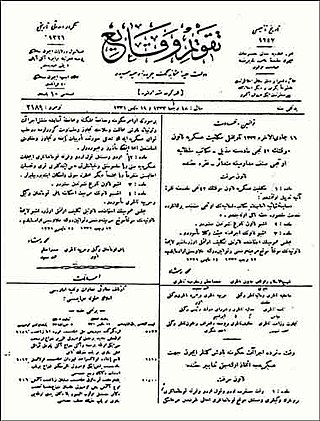
The Temporary Law of Deportation, also known as the Tehcir Law, or officially by the Republic of Turkey, the "Sevk ve İskân Kanunu" was a law passed by the Ottoman Council of Ministers on May 27, of 1915 authorizing the deportation of the Ottoman Empire's Armenian population. The resettlement campaign resulted in the deaths of anywhere between 800,000 and over 1,500,000 civilians, in what is commonly referred to as the Armenian genocide. The bill was officially enacted on June 1, 1915, and expired on February 8, 1916.
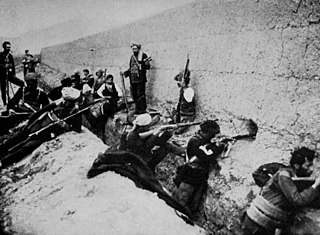
Armenian resistance included military, political, and humanitarian efforts to counter Ottoman forces and mitigate the Armenian genocide during the first World War. Early in World War I, the Ottoman Empire commenced efforts to eradicate Armenian culture and eliminate Armenian life, through acts of killing and death marches into uninhabitable deserts and mountain regions. The result was the homogenisation of the Ottoman Empire and elimination of 90% of the Armenian Ottoman population.

Operation Nemesis was a program of the Armenian Revolutionary Federation to assassinate both Ottoman perpetrators of the Armenian genocide and officials of the Azerbaijan Democratic Republic most responsible for the massacre of Armenians during the September Days of 1918 in Baku. Masterminded by Shahan Natalie, Armen Garo, and Aaron Sachaklian, it was named after the Greek goddess of divine retribution, Nemesis.

The Istanbul trials of 1919–1920 were courts-martial of the Ottoman Empire that occurred soon after the Armistice of Mudros, in the aftermath of World War I.
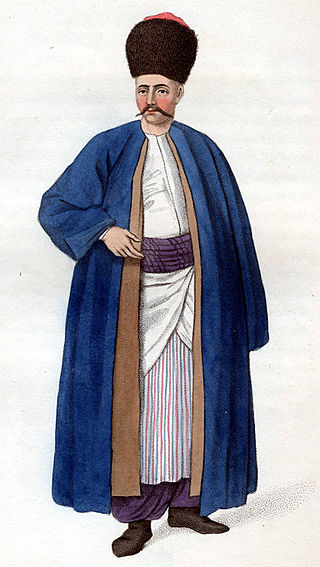
Armenians were a significant minority in the Ottoman Empire. They belonged to either the Armenian Apostolic Church, the Armenian Catholic Church, or the Armenian Protestant Church, each church serving as the basis of a millet. They played a crucial role in Ottoman industry and commerce, and Armenian communities existed in almost every major city of the empire. The majority of the Armenian population made up a reaya, or peasant, class, in Eastern Anatolia. The Tanzimat reforms in the nineteenth century sought to manifest the doctrine of equality before the law. Despite their importance, Armenians were persecuted by the Ottoman authorities, especially from the latter half of the 19th century, culminating in the Armenian Genocide.

Armenian genocide recognition is the formal acceptance of the fact that the Ottoman Empire's systematic massacres and forced deportation of Armenians from 1915 to 1923, both during and after the First World War, constituted genocide.

Trebizond was a city in the Ottoman Empire where the Armenian genocide occurred. The method employed to kill was mainly by mass drowning, resulting in estimated deaths of 50,000 Armenians. The city was also an important location of subsequent trials held to prosecute those involved with the systematic massacre. Cemal Azmi, the governor of Trebizond during the genocide, was later assassinated as part of Operation Nemesis.
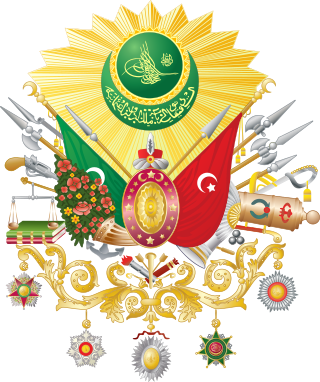
The Ottoman Empire was one of the Central Powers of World War I, allied with the German Empire, Austria-Hungary, and Bulgaria. It entered the war on 29 October 1914 with a small surprise attack on the Black Sea coast of Russia, which prompted Russia to declare war on 2 November 1914. Ottoman forces fought the Entente in the Balkans and the Middle Eastern theatre of World War I. The Ottoman Empire's defeat in the war in 1918 was crucial in the eventual dissolution of the empire in 1922.
The terminology of the Armenian genocide is different in English, Turkish, and Armenian languages and has led to political controversies around the issue of Armenian genocide denial and Armenian genocide recognition. Although the majority of historians writing in English use the word "genocide", other terms exist.


















